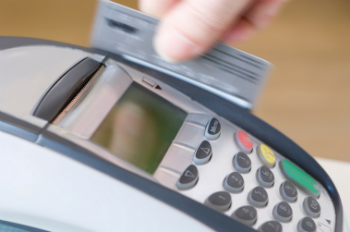In the Spotlight: The Secrets of Your Merchant Account Revealed
 Chances are, if your small business accepts debit or credit card payments from clients, you’re already familiar with the merchant account. At the most basic level, a merchant account is a special business bank account that allows your company to process electronic payment cards.
Chances are, if your small business accepts debit or credit card payments from clients, you’re already familiar with the merchant account. At the most basic level, a merchant account is a special business bank account that allows your company to process electronic payment cards.
But there’s a lot more going on behind the scenes to make these payment transactions possible than you might have realized – especially if your business engages in online sales. So, in the interest of the business owner who likes to stay informed – and for those who have yet to brave the domain of customer payment cards - here are the secrets of your merchant account revealed.
The Merchant Account
Unlike your business checking account, the merchant account – often called an MID, or merchant ID – is a pass-through commercial account that can only receive money electronically. As a temporary “holding tank” for funds, the MID isn’t so much a physical bank account as it is an agreement among a retailer (you), a merchant bank, and a payment processor. You already know who you are, so let’s take a closer look at the other two members of this team.
The Merchant Bank
As the financial institution that maintains your merchant account, the merchant bank - aka the acquiring bank, aka the acquirer - is responsible for hosting your customers’ point-of-sale or online payment card transactions. While these payments are temporarily deposited into your merchant account, the amounts must be approved and settled before the funds can be transferred into your regular business bank account.
MIDs are made available by big banks, payment processing companies, and Independent Sales Organizations (ISOs). But no matter the source of your merchant account, it must include an agreement with a payment processor.
The Payment Processor
The payment processor is a financial institution that facilitates the secure, electronic communication about your client’s payment, including whether it’s been approved or denied. It does this by quickly passing information back and forth between you, your merchant bank, and the vast credit card network (think Visa or MasterCard) that serves as an intermediary between:
- the payment processor, and
- the financial institution (the Issuing Bank) that issued your customer’s credit or debit card to them (think Chase, Citi, or Bank of America)
Some companies, like American Express, act as both credit card networks AND credit card issuers.
Confused yet?
Don’t worry - things will get clearer when we run through a brief example of what happens during a typical electronic payment process. But there’s one more term we should look at before we move on to that.
The Payment Gateway
If you conduct sales transactions online, your website must have a payment gateway. This online portal essentially functions like a security guard or doorman, with a role not unlike that of the point-of-sale terminal in your physical office or retail environment.
By providing an extra layer of security, the payment gateway is what makes it possible to safely transmit your customer’s private online payment information from your website to your payment processor. Most internet merchant accounts automatically include a payment gateway.
Putting it All Together
Now let’s see how all these team members work together to quickly, efficiently, and securely transform your clients’ payment card purchases into money in your bank account.
- Your customer uses their credit card to make a purchase, or pay for a service, face-to-face or over your website.
- The payment transaction details – including your MID number - are electronically and securely transmitted to your merchant bank by way of your payment processor (first passing through the payment gateway, if applicable).
- Your payment processor also alerts the appropriate credit card network, which in turn contacts the cardholder’s (your customer’s) issuing bank, to determine whether this particular purchase qualifies for approval.
- Approval or denial of the transaction is transmitted back to you through your payment processor (and payment gateway), so you can take appropriate action.
- Meanwhile, if your client’s payment is approved, their issuing bank will release the appropriate funds to your merchant bank, where they’ll be held in your merchant account for a settlement period that can last anywhere from two to seven days.
- After the settlement period, your customer’s payment can be transferred into your regular business bank account, and your customer will receive a statement from their issuing bank, requesting payment for their purchase.
Pretty painless, right?
The real beauty of the merchant account process is that, while you and your customer patiently await those two little words: “transaction approved”, today’s digital technology is making most of this happen in seconds - with many of us none the wiser as to what’s really going on.

Comments